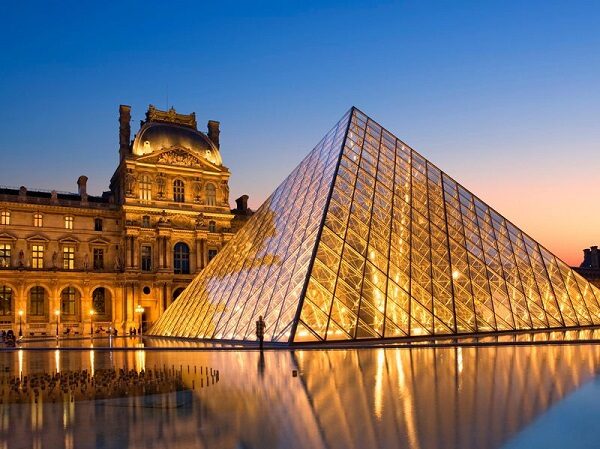Architect Ieoh Ming Pei (I.M Pei) started designing the Louvre Pyramid in 1983 and finished construction in 1989. I.M Pei designed the Pyramid in order to expand and modernize the historic Louvre. Although the expansion and modernization of the Grand Louvre was quite controversial, The Grand Louvre is currently one of the most visited museums located in Paris, France.
The Louvre Pyramid is a centrally located glass pyramid in the middle of the Louvre Palace which was built under Philip II in the late 12th to 13th century. The Pyramid sits on a two-meter thick slab of concrete and is 71 feet tall and covers 11,000 square feet. The Pyramid features a 540 degree spiral staircase, clear glass (673 panes of glass), and fans at the bottom of the pyramid to prevent condensation. The Pyramid itself is supported by stainless steel poles which reinforces the glass and protects it against wind. The construction of the museum cost around 1.5 billion Euros.

The Louvre Pyramid forms the main entrance into the museum which then leads down into different galleries and areas of the museum. The Louvre museum holds many popular art pieces such as the Mona Lisa and the Venus De Milo. Many individuals may recognize The Louvre as it was featured in the movie The Da Vinci Code directed by Ron Howard. One of Pei’s goals of designing the Louvre Pyramid was to integrate modern design without compromising the integrity of the historic structures and rich history.


